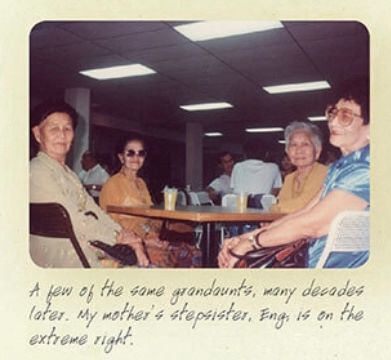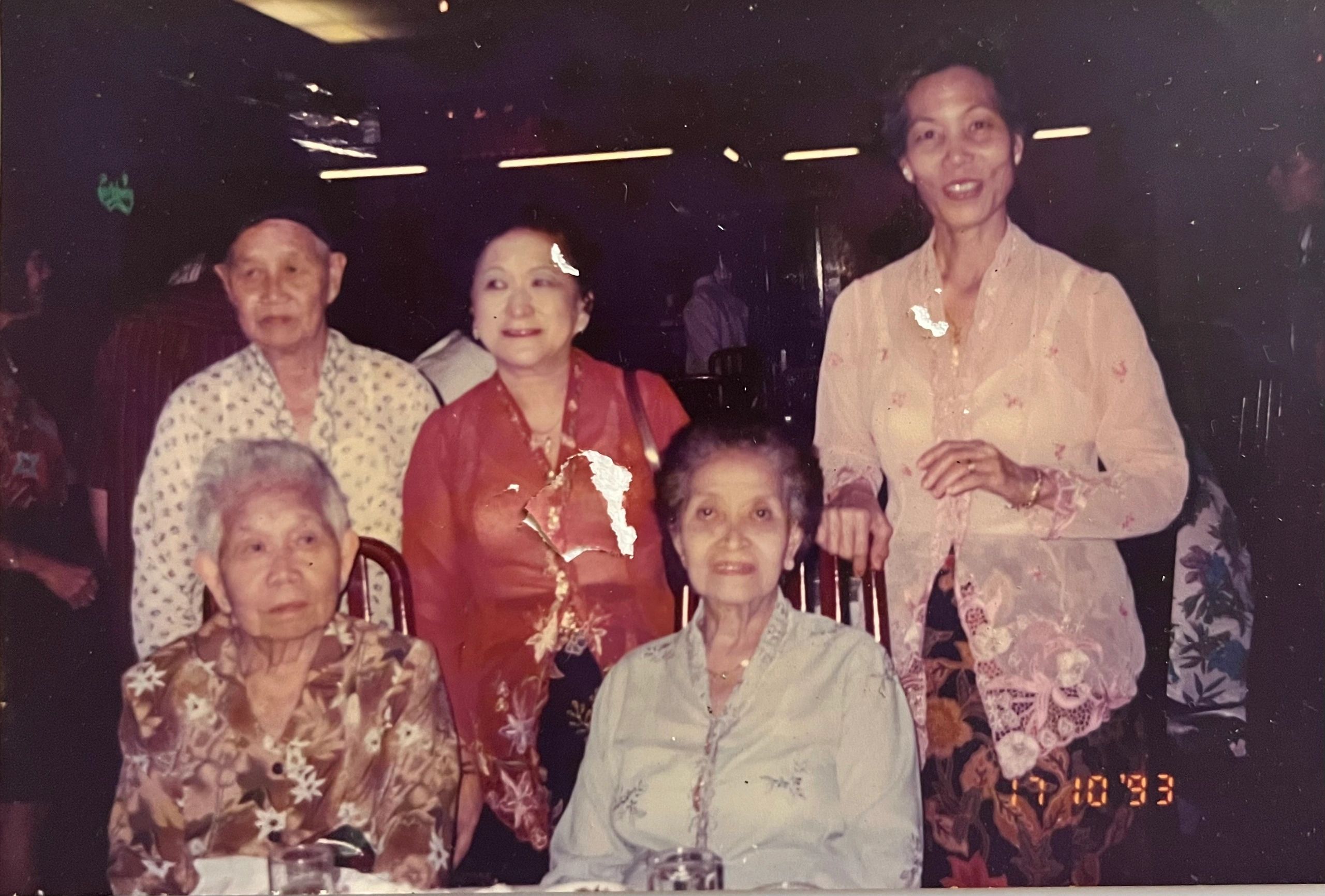The word “Auntie” in a Peranakan family comes in many variations. In the traditional family that I grew up in, it was rude to literally call an older female Nonya relative “Auntie”. Different aunts had different titles, following the traditional Chinese categorization which depended on whether it was the paternal or maternal side, or the younger or older sibling of a parent, and the generation that relative belonged to. Aunts could be numbered in order of their birth, such as “Si Koh” (fourth paternal aunt) or “Sa Koh” (third paternal aunt). As a child accompanying my parents to visit relatives during Chinese New Year, I needed to clarify beforehand what to call the matriarch whose house I was stepping into. My mother is pictured here in orange. On the left side of the picture are my father’s paternal aunts. My parents called them “Koh Koh” which is the Baba Malay equivalent of the Mandarin “Gugu” or paternal aunts.
To my parents, they are “Koh Koh”, but for me, they are “Koh Poh”, signifying that they are my grandaunts. The grandaunt on the bottom left was affectionately called “Koh Poh Keday”, meaning “Grandaunt Coffeeshop”. She was a savvy businesswoman who ran a traditional kopitiam coffee shop for most of her life. It was such a treat to visit her during Chinese New Year because her ang pows (red packets) were heftily stuffed with crisp dollar notes. 😂
The grande dame sitting down on the right, was my “Koh Poh” Beng Neo. She was my paternal grandfather’s first cousin. It was “Koh Poh” Beng Neo who taught me how to pound in sequence and shared with me a few of her personal recipes.
The grandaunt on the top left was “Koh Poh Bulat”. It seemed contradictory to revere her with “Koh Poh” but insult her with “Bulat” which meant ‘round’ in reference to her hair loss. She was wearing a wig in this photo. Such were the ways of the Nonyas.
The tall elegant lady on the top right, is my father’s sister-in-law (married to his brother). Thankfully, my sisters and I got away with calling her Aunty Teresa but I am certain that she has a formal term that we aren’t even sure of!

